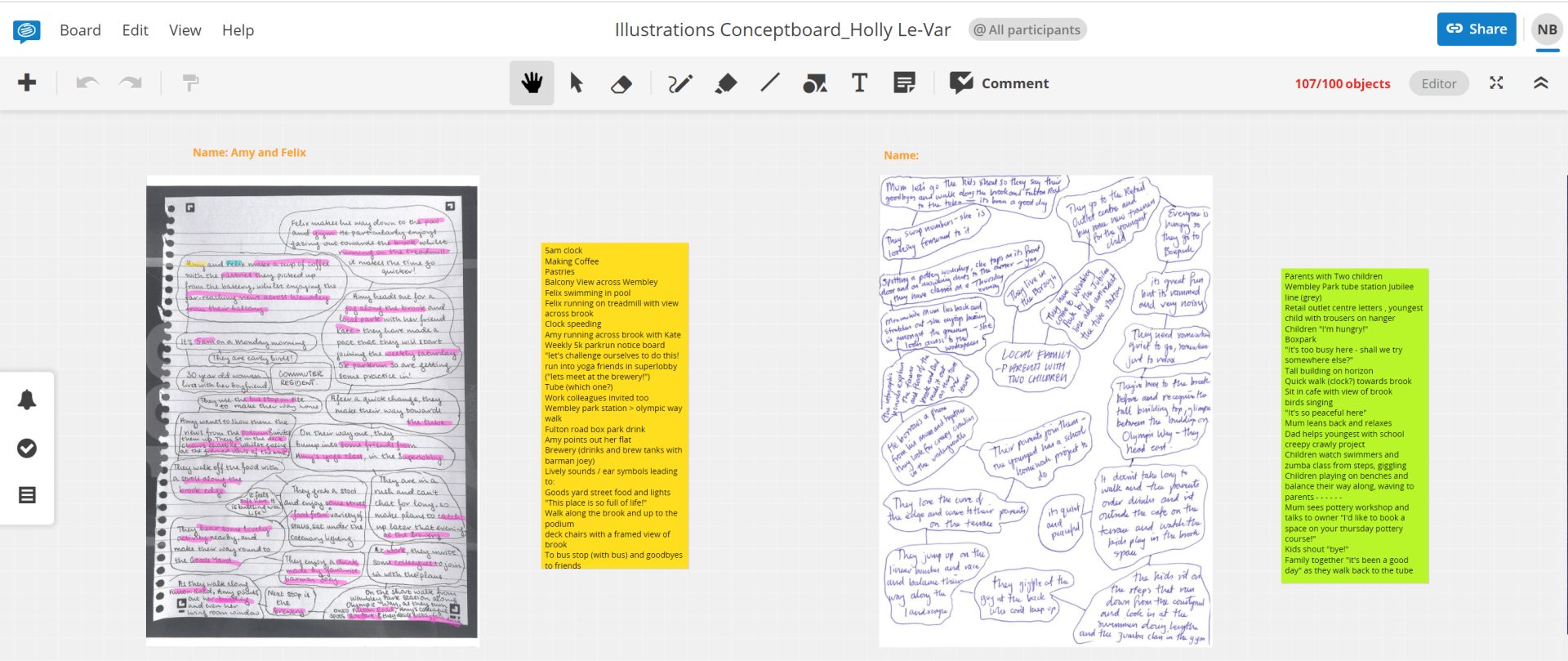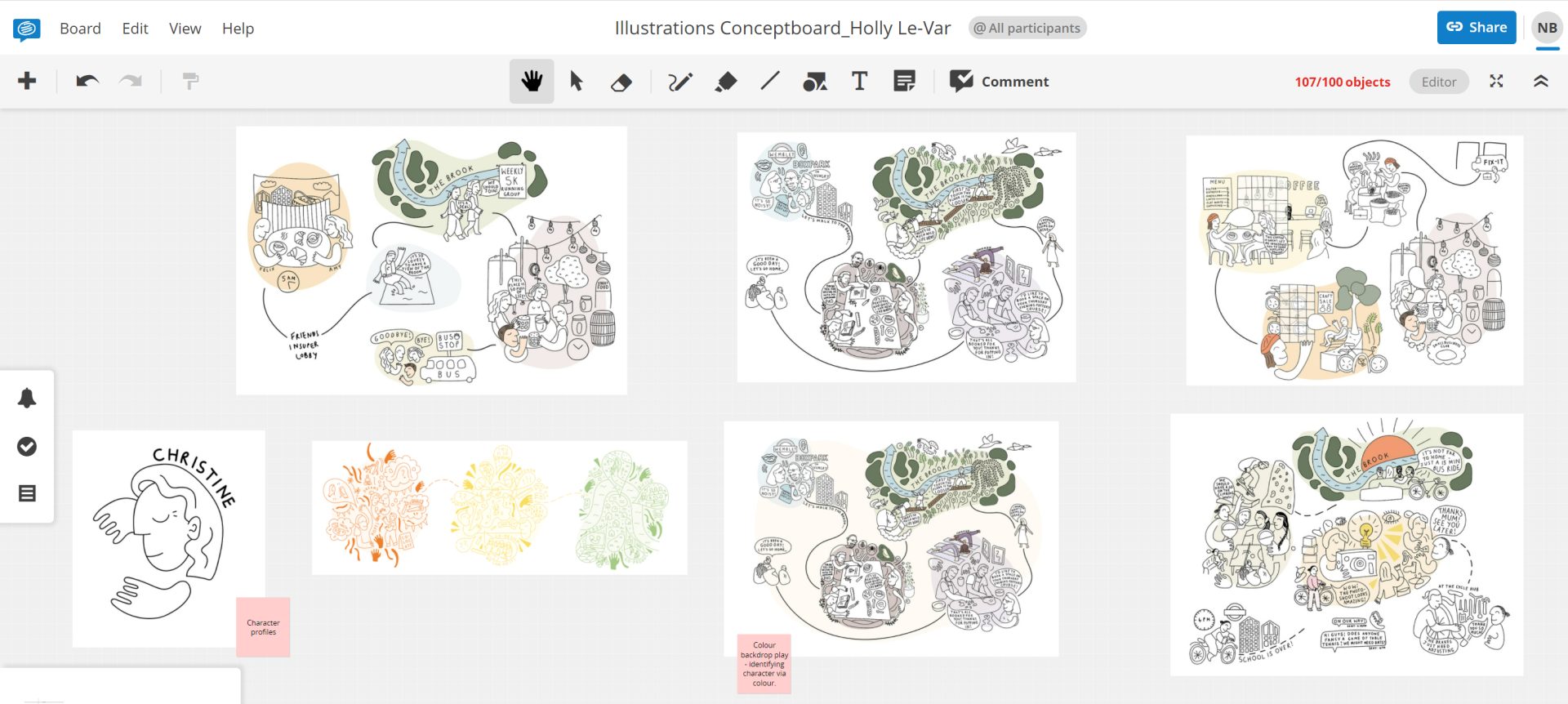Understanding who?
We didn’t want to be constrained by simply thinking about new residents. We wanted to imagine a range of people that would use and interact with the new spaces and buildings, so that we could shape the proposition and explain the story of the proposals. The best places in our cities allow you to spend time in them for free and our design very much looked to provide a hard and soft landscape that all people could enjoy. So, to respond to this philosophy we considered people that might visit the site, be drawn to the new landscape, choose to live there, work in the area or use the new facilities. We wanted to consider different cultures, ages and backgrounds to properly represent the population of Brent, one of London’s most diverse boroughs.
We needed time on the ground. Being local allowed us to cover the tarmac, cross and circumvent the area, sit in local cafés to people-watch, drag our complaining children around at the weekends and observe the theatre of life play out. We questioned workspace specialist Andrew Sissons from AND London as to who worked here now and who formed the pent-up demand for workspace, and we absorbed the views and stories of local people reached by zoom sessions, letter drops and the project website during the heights of lockdown. This gave us a deeper understanding of local nuances with which to inform our bespoke strategy moving forward.
Finding the right ‘voice’
In a world of ever-impressive technology, computer visualisations and the blurring of reality, we wanted to find a way to tell the story of people, in a way that engaged people. As passionate hand drawers, it’s always exciting to commission artists but we had a hunch that this wasn’t a job for our regular stable of architectural illustrators. Instead, we needed the focus to be on people and their interaction. We knew of the work of Holly Le Var and instantly connected with her friendly, accessible style and the compassion evident in her work. Her role as a tutor at Central St Martin’s would also help; we were learning as we went.
Holly proved to be as engaging as her drawings and our first video conference proved a meeting of minds. As two groups of visual people, we knew that emails wouldn’t suffice so we’d prepared a virtual whiteboard on Conceptboard, on which we crammed lots of content to help Holly become familiar with the proposals and to assist in brainstorming ideas which enabled meaningful and instant feedback. “Being fully briefed on the context and location, alongside being provided with Computer Generated Images (CGIs) and plans, assisted massively with my ability to understand the tone of the Wembley Scheme” she reflects.




